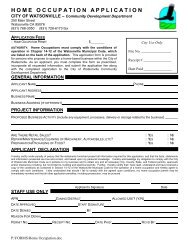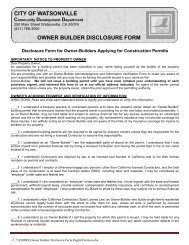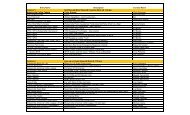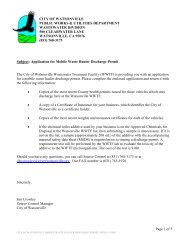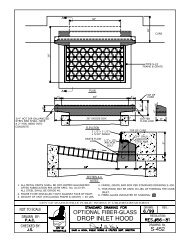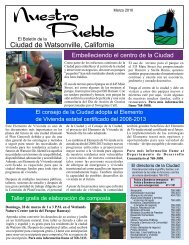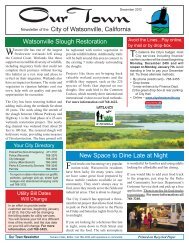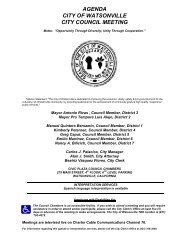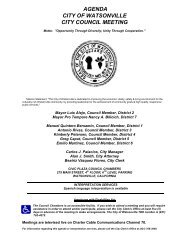Vegetation Management and Maintenance Plan - Watsonville ...
Vegetation Management and Maintenance Plan - Watsonville ...
Vegetation Management and Maintenance Plan - Watsonville ...
Create successful ePaper yourself
Turn your PDF publications into a flip-book with our unique Google optimized e-Paper software.
FENNEL<br />
Foeniculum vulgare<br />
DISTINCTIVE FEATURES This perennial herb plant is distinguishable<br />
by its strong anise scent <strong>and</strong> finely dissected, feathery<br />
leaves. Stems arise from a thick, deep taproot <strong>and</strong> support branches of<br />
the feathery leaves. The flower groups form large, rounded umbrellashaped<br />
clusters atop tall stems. The seeds are oblong <strong>and</strong> ribbed <strong>and</strong><br />
resemble anise. <strong>Plan</strong>ts grow 4-10 feet tall.<br />
BLOOMS Yellow, April - July.<br />
PREFERRED HABITAT Fennel is most common in moist areas<br />
along the coast, typically below 2,000 feet. It also grows in the Central<br />
Valley as scattered occurrences in fields <strong>and</strong> along drainage channels.<br />
It can tolerate a wide range of soil conditions, yet most commonly<br />
forms dense st<strong>and</strong>s on high clay soils. Fennel reproduces from<br />
both root crown growth <strong>and</strong> seed. Seeds form on plants 1.5-2 years<br />
old.<br />
ENGLISH IVY<br />
Hedera helix<br />
ALGERIAN IVY<br />
H. canariensis<br />
DISTINCTIVE FEATURES These aggressive perennial vines are<br />
evergreen, becoming woody as it ages. English ivy leaves are 3-5<br />
lobed, leathery <strong>and</strong> are alternately arranged along the stem. Algerian<br />
ivy leaves are generally 3-lobed. Young shoots <strong>and</strong> leaves often have<br />
hairs. The vine produces inconspicuous white flowers, followed by<br />
dark blue to black fruit. Some forms have variegated leaves.<br />
BLOOMS White, December - February.<br />
PREFERRED HABITAT Forms spreading patches in coastal forests<br />
of California. Prefers shady, disturbed sites with year-round moisture,<br />
such as riparian woodl<strong>and</strong>s, moist oak woodl<strong>and</strong>s, <strong>and</strong> redwood forests.<br />
English ivy is native to Engl<strong>and</strong>, Irel<strong>and</strong> <strong>and</strong> northern Europe; it<br />
is very frost-hardy. Algerian ivy is native to Tunisia <strong>and</strong> Algeria <strong>and</strong><br />
can be frost-damaged.<br />
English ivy<br />
Algerian ivy




